By
O. James ,P.N.Ndoke and S.S.Kolo
Department Of Civil Engineering, Federal University Of Technology.
Minna.
ABSTRACT
Normal concrete was prepared with a water-cement ratio of 0.50. cube specimens were cast for testing the compressive strength at 7 and 28 days of curing respectively using three curing methods namely immersion, sprinkling and Plastic sheeting, curing to cure the cube specimens until the day of testing. Test results indicates that water curing (WAC) as well as sprinkling (spraying) curing provided much better results than membrane (Plastic Sheeting) method of curing. The rate of drying was significant when the specimens were subjected to membrane (Plastic sheeting) method of curing. This thus hampered the hydration process and thus affected the compressive strength property of the hardened concrete. The overall finding of this study suggests that concrete should be cured by water curing to achieve a better compressive strength.
Keywords:
Curing method, compressive strength, concrete
INTRODUCTION
Concrete curing is one of the most important and final steps in concrete construction though it is also one of the most neglected and misunderstood procedures. It is the treatment of newly placed concrete during the period in which it is hardening so that it retain enough moisture to immunize shrinkage and resist cracking (LambertCorporation, 1999).
Curing of concrete is a pre requisite for the hydration of the cement content. For a given concrete, the amount and rate of hydration and furthermore the physical make-up of the hydration products are dependent on the time-moisture-temperature history (Neil Jackson et al, 1996).
The necessity for curing arises from the fact that hydration of cement can take place only in water-filled capillaries. This is why loss water must be prevented. Furthermore, water lost internally by self-dedication has to be replaced by water from outside, i.e.ingress of water into the concrete must take place. (Neville,et al,1987). Thus, for complete and proper strength developments, the loss of water in concrete from evaporation should be prevented, and the water consumed in hydration should be replenished. This the concrete continues gaining strength with time provided sufficient moisture is available for the hydration of cement which can be assured only by creation of favourable conditions of temperature and humidity. This process of creation of an environment during a relatively short period immediately after the placing and compaction of the concrete, favourable to the setting and the hardening of concrete is termed curing (Gambir, 1986).
A proper curing maintains a suitably warm and moist environment for the developments of hydration products, and thus reduces the porosity in the hydrated cements paste and increases the density of microstructure in concrete. The hydration products extend from the surfaces of cement grains, and the volume of pores decreases due to proper curing under appropriate temperature and moisture (Safiudeen et al,2007). A proper curing greatly contributes to reduce the porosity and drying shrinkage of concrete, and thus to achieve higher strength and greater resistance to physical or chemical attacks in aggressive environments. Therefore, a suitable curing method such as water ponding (immersion), spraying or sprinkling of water, or covering with polythene sheet material is essential us order to produce strong and durable concrete.
The study present the effect of different curing methods on the compressive strength of concrete using Portland cement and finally identifies the most effective curing process for normal concrete.
MATERIALS AND METHODS
Locally available crushed granite stones and fine aggregate (quartzite sand)were used as coarse and fine aggregate respectively. The fractions of different sizes of crushed granite stone and fine aggregates, as shown in Table 1 were in the ranges specified in Bs 812 (1960) methods for sampling and testing of aggregates.
Ordinary Portland cement was used as the main binder. Portable water from borehole was used for preparing the concrete. It was also used for curing purposes. The major properties of the constituent materials are given in Table 2.
Table 1: Gradation of crushed granite stone and quartzite sand.
|
SIEVE SIZE |
% FINER BY MASS |
|
|
|
Crushed Granite Stone (Fineness Modulus: 4:81) |
Sand (Fineness Modulus:4.23) |
|
28.00mm |
100 |
|
|
20.00mm |
85.91 |
|
|
14.00mm |
19.86 |
|
|
10.00mm |
10.82 |
|
|
6.30mm |
1.28 |
|
|
5.00mm |
0.29 |
99.48 |
|
3.35mm |
– |
99.21 |
|
2.00mm |
– |
98.47 |
|
1.18mm |
– |
93.60 |
|
850µm |
– |
86.97 |
|
600µm |
– |
75.40 |
|
425µm |
– |
56.62 |
|
300µm |
– |
43.66 |
|
150µm |
– |
13.53 |
|
75µm |
– |
10.03 |
|
Pan |
– |
0.00 |
Table 2: Properties of the constituent materials of concrete.
|
Materials |
Properties |
|
Crushed Granite Stone |
Max. size:20mm,unitweight: 434.50kg/m3 Specific gravity: 2.68, Absorption:0.77%, Moisture content: or 14%, void ratio: 0.46, Porosity: 9.27% |
|
Fine Aggregate |
Max. size:5mm, unit weight: 518.70kg/m3, Specific gravity: 2.77, Absorption:2.29%, Moisture content:4.71%, void ratio: 0.45, Porosity: 0.07% |
|
Ordinary Portland Cement |
Specific Gravity: 3.15, unit weight: 1440kg/m3 |
|
Borehole Water |
Density: 1000kg/m3, PH = 6.9 |
Mixture Proportions of Concrete.
The normal concrete was prepared based on water cement ratio of 0.50 and a cement content of 340kg/m3to obtain a compressive strength greater than 20N/mm2 at 28 days (Immersion method of curing). Quartzite sand was used with a quantity of 33.33% of total aggregates by weight. The concrete mixture was proportioned to have a minimum slump of 48mm and also a minimum compacting factor or 0.94. The concrete mixture was assumed to be fully compacted and the proportions of the materials were determined on the basis of absolute volume of the constituents. The details of mixture proportions are given is table 3 below
Table 3: Mixture Proportions of Concrete
Crushed granite stone – 1360 Kg/m3
Fine aggregate – 680 Kg/m3
Ordinary Portland Cement – 340 Kg/m3
Portable Borehole Water- 170 Kg/m3
Testing of Fresh Concrete
The fresh concrete was produced using manual method of mixing in the civil engineering laboratory of F.U.T Minna. Immediately after mixing, the fresh concrete was tested for slump and compacting factor. The slump and compacting factor tests were determined according to Bs 812 (1960)
Preparation of Test Specimens
A total of 48 cubes having dimensions 150mm x 150mm x 150mm each were cast. The specimens were molded in oiled timbers moulds using three layers of filling and each layer tamped 25 times to expel the entrapped air. The tops of the cubes were marked after a while for identification purpose. Immediately after this, the specimens were kept in a cool place in the laboratory. The specimens were removed from the wooden moulds at the age of 24+ – 2 hours.
Curing Methods
The test specimens were cured under three types of curing until the day of testing. These were water curing(WAC), sprinkling of water (SWC) and wrapping with plastic sheeting (PSC).In water curing, the specimens were weighed and immersed in water. Portable borehole water was used in water curing. In sprinkling method, the specimens were also weighed and kept moist by sprinkling water on the specimens 2 times daily (morning and evening) until the date of testing. In plastic sheeting, the specimens were weighed and wrapped in flexible plastic sheets until the testing date. At least 2 layers of wrapping were used to prevent moisture movement from concrete surface. The curing temperature was maintained at 27 + 2oC in all the curing methods.
Testing of the hardened concrete.
The compressive strength of the test cubes were determined by crushing the cubes under the compression machine. A total of 48 cubes in all were crushed, 16of these cubes were for immersion method, the next 16 cubes were for sprinkling method while the last 16 cubes were for membrane of these cubes were for 5 sprinkling method while the last 16 cubes were for membrane method (Polythene Sheet). The length of curing dates considered was7 and28 days respectively.
RESULT AND DISCUSSIONS
Fresh Properties:
The slump and compacting factor of the concrete were 48mm and 0.94 respectively indicating that the concrete mix has adequate mobility and stability i.e the mix fall within the range of medium workability. The average result of 0.94 obtained as the compacting factor indicated that the concrete can be manually compacted.The concrete can also be used for heavily reinforced sections with vibrations (Neville et al,1987).
COMPRESSIVE STRENGTH
The results of compressive strength have been presented in tables 4-9and in the graphical representation of average compressive strength versus curing age for different methods of curing used in the experiment (see fig 3). In all curing methods, the compressive strength of the concrete increases with age. The highest compressive strength at all ages was produced by immersion (water) curing. The average compressive strength of water cured concrete was 13.56w/mm2 and 20.34 N/mm2 at 7 and 28 days respectively. Sprinkling method produced compressive strength close to immersion (Water) curing.Sprinkling method produced a compressive strength of 12.25w/mm2 and 18.38N/mm2 at 7 and 28 days respectively. The development of higher compressive strength in immersion (Water) curing and sprinkling method of curing is credited to sufficient moisture and suitable vapour pressure, which were maintained to continue the hydration of cement.
Plastic sheeting (membrane) method of curing produced the lowest compressive strength at all ages. It caused a reduction in compressive strength of 1.89N/mm2 and 2.92N/mm2 at 7 and 28 days, respectively, as compared to water curing. The early drying of concrete stopped the cement hydration before the pores were blocked by adequate calcium silicate hydrate.
CONCLUSIONS
1. Water curing was themost effective method of curing. It produced the highest level of compressive strength. This is due to improve pore structure and lower porosity resulting from greater degree of cement hydration reaction without any loss of moisture from the concrete specimens.
2. Sprinkling method of curing produces higher compressive strength than plastic sheeting. This is attributed reduced the moisture movement from concrete specimens leading to enhanced degree of cement hydration.
3. Plastic sheeting method of curing produces lowest level of compressive strength. This is because the moisture movement from the concrete specimen is higher in plastic sheeting method, which did not provide and any protection against early drying out of concrete. Hence hydration of cement reaction was abated.
4. The extent of moisture movement was greatly dependent of the method of curing. Greater moisture movement occurs under plastic sheeting (membrane) method, and it significantly affected the strength property of the concrete.
5. Normal concrete should be cured by water curing (immersion) method in order to achieve good hardened properties. Water curing produces no loss of moisture, and therefore enhances cement hydration reaction. In case of water shortage, sprinkling curing can be adopted instead of wrapped (plastic sheeting) curing.
REFERENCES
B. S. 812 (1960): Method for Sampling and testing of Mineral Aggregate, Sand and Filler.
Gambhir M. L. (1986): Concrete Technology, Third Edition. Tata Mcgraw-Hill Publishing Company Limited.
LambertCorporation (1999): Concrete Curing, www.lambertusa.com
Neil Jackson et al (1996): Civil Engineering Materials. Fifth Edition. Published by PALGRAVE Houndmills, Basingstoke, Hampshire RG21 6×5 and 175 Fifth Avenue New York, N.Y 10010.
Neville A. M.& Brooks Concrete Technology. Longman Scientific
J. J. (1987): and Technical, Longman Group Ltd, Longman HouseBurnt Mill, Harlow, Essex CM20 2JE, England.
Safiuddin Md, Raman S.N.
Zain M.F.M (2007) Effect of different Curing Methods on the Properties of Micro Silica Concrete. Australian Journal of Basic and Applied Science, 1 (2): 87 –95, 2007 ISSN 1991-8178 © 2007, INSI net Publication.
We at engineeringcivil.com are extremely thankful to Er. Kolo Stephen Sunday for sharing his research on “Effect Of Different Curing Methods On The Compressive Strength Of Concrete.” We hope this will be of great help to not only civil engineers but also to site supervisors who wish to understand the importance of curing.
If you have a query, you can ask a question here.



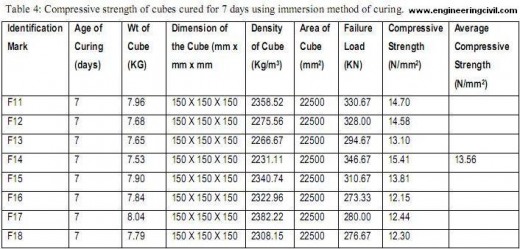
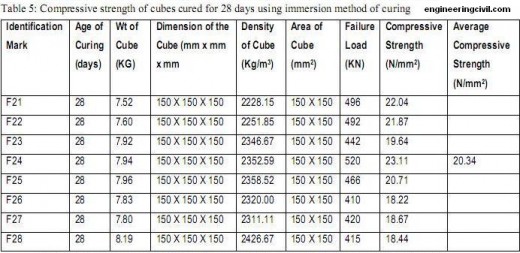
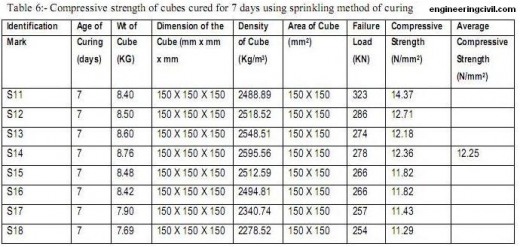
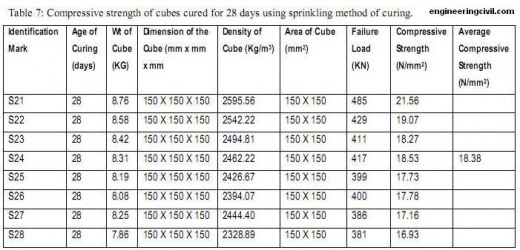
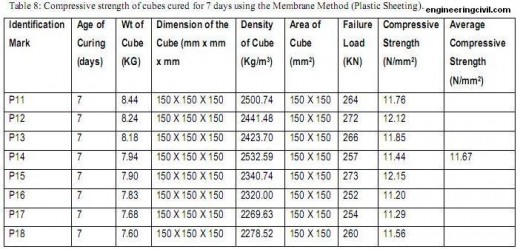
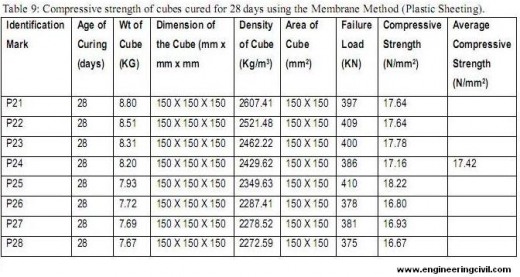
SUPER
this site is WOW…thanks 4 helping…..